Why Non-Profit Organizations Need Solution Integration



Today’s non-profit organizations find themselves in a complex environment. The traditional ways of fundraising are becoming inefficient, and they must adopt new methods of finding donors and sponsors.
They also must deal with diversified markets, customers, and channels. Integration solutions for non-profit organizations are becoming a must-have for organizations that want to achieve their goals.
Integrated marketing brings coherence by aligning and coordinating marketing efforts to deliver a consistent, customer-centric, and seamless experience across every channel. It increases operational efficiency and, through collaboration, leads to superior organizational performance.
However, delivering an integrated customer experience requires marketing teams to work collaboratively instead of competitively. It will depend on your organization’s will to increase not only collaboration but also performance and operational efficiency.
According to research, integrated campaigns are 31 percent more effective at brand building and 57 percent more effective in terms of achieving goals than those not integrated.
These kinds of statistics beg the question of why aren’t non-profit organizations adopting an integrated approach.
The answer is internal competition.
For a long time, organizations have been using a multichannel mode of marketing where every department handles a certain channel, and these silos result in lots of liabilities.
To overcome this enemy, non-profit organizations must shift from a culture of internal competition to one of collaboration. With increased collaboration, integration takes root leading to a more customer-centric organization.
Why Integrate?

Every channel you use to reach out to your donors has its strengths and weaknesses. Different types of content also suit different types of channels. For example, Pinterest is great for carefully staged photos, while Twitter is all about short and witty messages.
By continuing to play on each channel’s strength, your message gets lost among all the content the consumer accesses daily. Integration provides you with the opportunity to use one clear communication strategy. It helps you coordinate messages.
The integration approach allows non-profit organizations to integrate their communication and interactive experiences. They do this by coordinating all aspects of brand marketing, including owned, paid, and earned media.
Moreover, it allows organizations to provide consistent messaging that is customized according to channel and present the audience with a seamless experience throughout their donor journey.
The audience can interact with the brand seamlessly since all communication and messaging strategies not only are consistent but have the customer at the center.
Take, for example, Coca-Cola. They are a well-known brand by almost everyone in the world. However, they are constantly advertising. Why? Because there is a need to constantly remind consumers about the brand even though they know of its existence.
Non-profit organizations can easily borrow a page from for-profit companies. After all, you are competing in a way. You try to convince people to forego their Coke bottle in exchange for supporting a worthy cause.
Consistent messaging across multiple channels is critical. With it, your non-profit will make an impact since you remain at the top of the minds of your donors and sponsors.
However, successful integrated marketing will require more than just having the same brand colors and slogan on all marketing channels.
Apart from delivering the basic elements like slogan, color, and logo (hygiene factors), the personalities or characters you use should also be consistent. It’s about weaving a coherent story with every brand touchpoint – both offline and online.
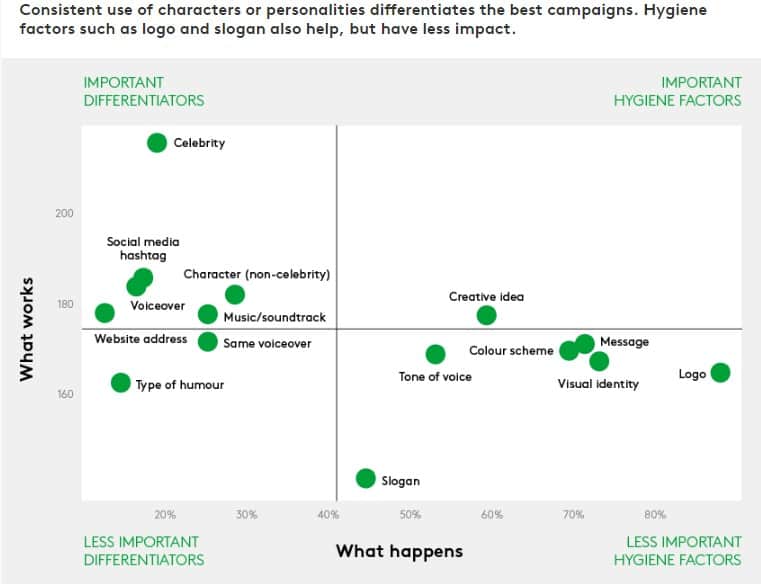
Image Source: Kantar Millward Brown
Using the same set of characters across channels helps you successfully integrate and create a lasting and memorable campaign. You will need to consider all customer touchpoints with the brand during their lifecycle so that you can choose the best channels to integrate and align messaging.
Once data from all touchpoints are collected in one location, then your organization can engage donors and sponsors in a more meaningful and personalized way. Seamless connections between systems allow the organization to have the right data to allow for message customization.
You get a complete picture of every individual supporter’s relationship with your organization. You can then clearly communicate the benefits of your organization or campaign to target audiences and have time to make the world a better place.
How Integration Helps Non-Profit Organizations

If your non-profit organization can collect data, analyze it, and gain meaningful insights on audience behavior, then you can run successful fundraising campaigns, using fundraising software. You can make data-driven decisions with less risk leading to growth.
The good news is that 90 percent of non-profit organizations are collecting data. The bad news is that only 5 percent are using it to make all their decisions. The ability to use data collected helps you know what works and what doesn’t.
The information gathered helps you make changes to your fundraising tactics, website, and email campaigns. It gives you the power to get quality leads, nurture them through the donor funnel, and grow a strong relationship with them.
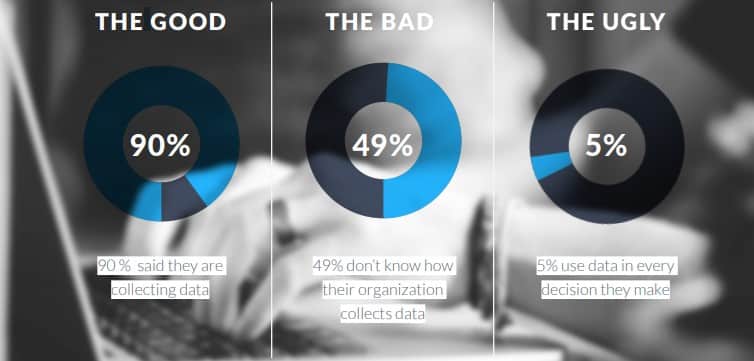
Image Source: EveryAction
The ugly news is that 49 percent don’t know where their organization collects data. This lack of information could maybe be because organizations have been using separate systems to collect data.
They have disparate systems for accounting, CRM, email, social media, crowdfunding, volunteer management, and many more. Moreover, when handling crowdfunding fulfillment, centralized data management becomes even more crucial for ensuring transparency and accountability.
Your non-profit organization might be collecting data, but it’s not available in a single database. It then becomes hard to consolidate the information from all these software solutions. More importantly, it also becomes difficult to track and manage donor data.
The process of exporting and importing data is also time-consuming and could mess up your data. You lack a well-rounded view of each donor and the relationship they have with your organization.
It also means that you cannot effectively segment or personalize any of your communication with them.
Ninety-seven percent of non-profit organizations want to get better at data gathering and utilization. However, they are also facing several issues that are preventing them from using the data they collect.
These include not being able to collect enough data and the lack of tools to analyze the collected data.

Image Source: EveryAction
Adopting integration solutions for non-profit organizations reduces all these issues above and makes the process of data collection and analysis easy. It centralizes data and allows your organization to make informed decisions.
With integration, your non-profit organization can see the history of an individual donor, their giving capacity, and any other actions they took at your different brand touchpoints.
With this information, you can create targeted content that will allow you to deepen your relationship with them and help you communicate with similar donors.
Your team gets a 360-degree view of your donors and prospects so that you can hone your future fundraising efforts. You will be there when lead opportunities present themselves, guide the leads to donate, and build relationships that make these donors brand ambassadors.
Using Integration Solutions for Non-Profit Organization Growth

As noted above, non-profit organizations don’t have a problem collecting data. The problem is making it work to improve their relationships with donors.
Data gathered from Facebook likes and shares, blog subscriptions, fundraising records, and other stats make for valuable information and insights. However, not having the right tools to refine this data and make it valuable enough to provide insights does not help.
Integration solutions turn your data into valuable information. When all your data from different platforms are accessible from one location, you get patterns. You know whether your efforts are failing or succeeding and how best to improve or change them.
The following are reasons why your non-profit organization should adapt integration solutions:
1. You get to know your donors
There are countless donor management solutions available in the market to help you grow your organization. Two of the CRMs non-profits typically use are Salesforce and Kindful. A 2019 Salesforce non-profit CRM research found that a huge majority of non-profits use a CRM system, but the degree of adoption differed from widely adopted to barely adopted.
Organizations that used a CRM system and that had widely adopted it indicated that they exceeded their fundraising goals. Organizations that had been using the system for more than a decade also exceeded their fundraising expectations compared to those who had adopted it for lesser time.

Image Source: Salesforce
A non-profit CRM helps you centralize and track donor data to drive engagement. You can track everything from amounts, dates, to interactions between donors and your staff.
One of the most beneficial non-profit CRM features is the ability to segment your donors. A CRM that integrates with other systems allows you to collect more data on donors and sponsors.
With the data your organization collects, you can create segmented lists. You will have filters that help you track the who, when, what, why, and where of donations and donors.

Image Source: Salesforce
Consider donor giving trends and responses. Who gives seasonally, once a year, or a few times a year? Who opens your newsletters? Who picks up your calls? Who is involved in events and charities? Who uses social media to keep up to date?
Using this information, categorize your donors. Note that some may fall into more than one category, meaning you can reach out to them in more than one way.
Creative filtering will ensure you don’t send generic letters. You make every donor feel special and important. Your campaigns also get a personal feel.
Filter the segmented lists based on demographics and behavior. The filtered categories may include:
The segmentation will highly depend on your non-profit goals.
Continue filtering these groups into demographics like
Filter based on response: Did they respond to your call to action? On which channel?
You can also filter depending on their giving patterns
The filters will give you an in-depth knowledge of your donor. Keep changing the information depending on donor behavior to stay up to date with their giving patterns.
Segmenting the donors allows you to know your donor well. You can tell who donated most recently, the amounts they gave, why they donated, when they donated, and much more. It will take time, but it’s worth the effort.
It will ensure you don’t send campaign messages to people who won’t donate and thus waste money. It also ensures you don’t spam your donors with donation requests. Such annoying behavior makes donors unsubscribe from your list.
Segmentation allows you to personalize relationships with your donors. You will no longer send generic blast emails but give the donors the personalization they expect. You will understand their giving patterns and improve your fundraising effectiveness.
You will also save time and make the donors more likely to respond. Ninety-eight percent of marketers believe that personalization has an impact on advancing customer relationships with organizations.
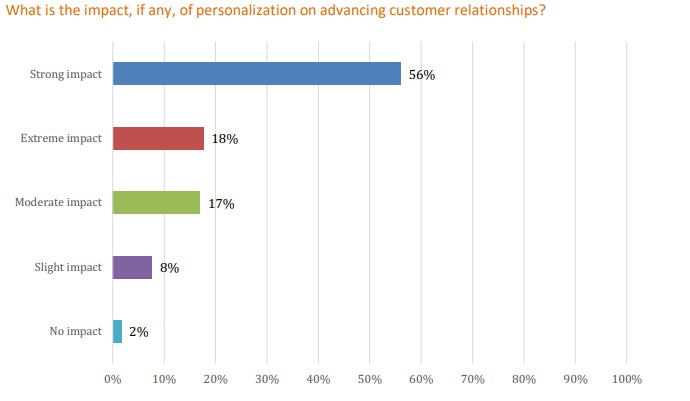
Image Source: Evergage
2. Easy transfer of information
With integration, you can easily access information from either the non-profit CRM, non-profit reporting apps, data analysis software, or your accounting software for non-profits.
Instead of having data in all the different systems you use, integration allows you to house all your data in one place. You do not have to manually export or import data, therefore preventing duplication of data, time wasted with manual data entry and clerical errors that affect workflows.
When you house all your information in one system, it becomes easy to manage data and reduce human error. Your communication and fundraising also become powerful since data is transferred automatically to relevant workflows. It makes it easy to improve communication with existing and new donors.
It also becomes easy to integrate with an online payment system. You will make it easy for 54 percent of donors who prefer to give online using a debit or credit card.
Research carried out by CAF Online found that only 19 percent preferred to give via a website or app compared to 53 percent who used cash.
However, the most interesting thing a non-profit can take advantage of is that out of the 19 percent, nearly half (46 percent) used a website, 3 percent used a charity app while 58 percent used a third-party website. They also found that one in seven who donated via a website or app used social media (e.g. a Facebook donate button).
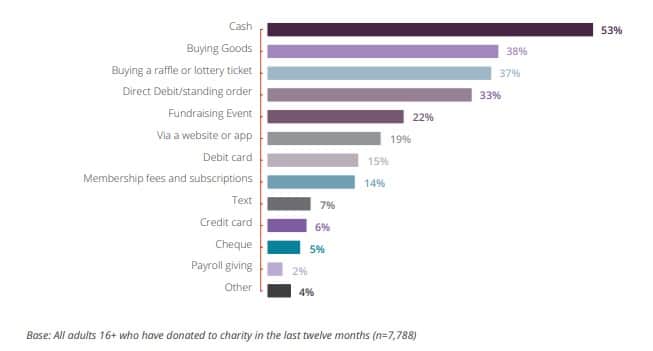
Image Source: CAF Online
By integrating your mission-critical solutions, you make it easy for these donors to donate with one click and send recurring contributions to your non-profit. No matter the channel they choose, you gain access to data on their donation habits and can make their experiences seamless.
3. Better reporting
Donations mostly depend on the credibility of a non-profit. A 2018 Trust in Charities report found that trust in charities continues to decrease each year.
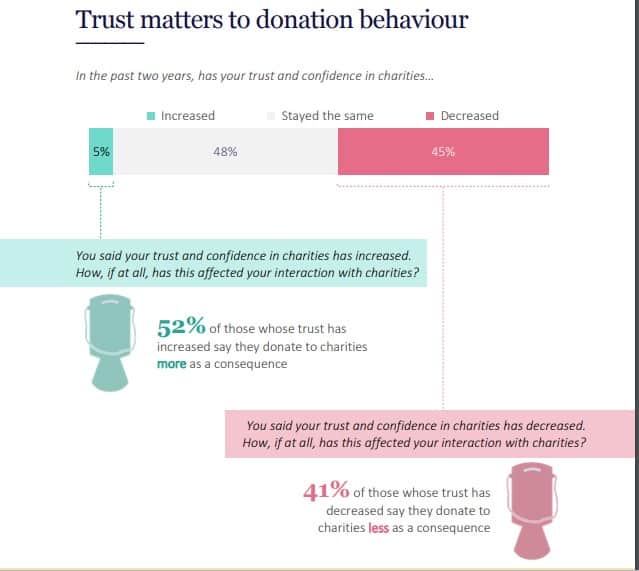
Image Source: nfpSynergy
The public suspects that some charities are not living up to their values, demonstrating impact, or showing good financial stewardship. Transparency on fund distribution and the end impact are critical in building trust.
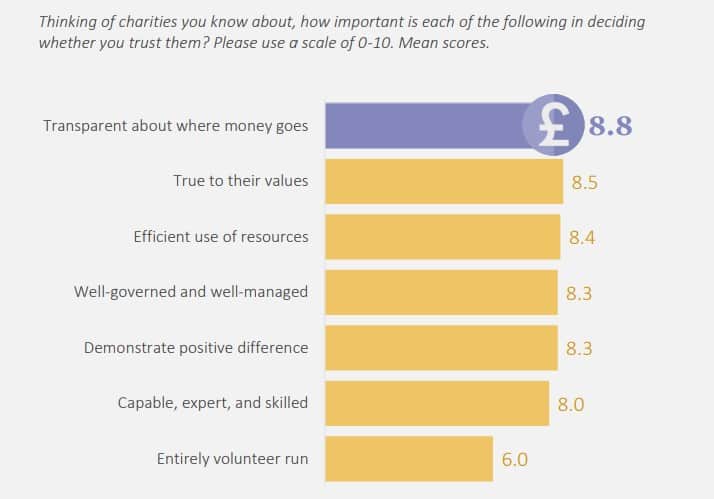
Image Source: nfpSynergy
Your ability to get donations is, therefore, proportional to your ability to build trust among donors. Integrating data will make it much easier to migrate data to reports that show outcomes.
If you can show outcomes, you get more funding. It becomes easier to show effectiveness in the field, effective management of funds, and honest fundraising campaigns.
Data helps you show that your organization is making a positive difference and that the donations make it to the end cause.
Building trust and credibility in your donor’s eyes makes it easy for them to trust and donate more.
4. Increased operational and cost-efficiency
Integration:
This information helps you run ads or send content that will get your donors’ attention and make them donate.
Integration also allows you to track the effectiveness of your efforts. You can tell what channel works best and what message moved people more. You can then change or alter them to avoid wasting resources.
5. The ability to create powerful stories
Honest, courageous storytelling drives the most successful fundraisers. Compelling stories turn passive visitors into active sharers and donors.
To succeed, you must create stories that move people to make donations. The more compelling and powerful your story is, the more effective it becomes.
The right integration solutions for non-profit organizations give you access to data that shows you trends that will help you create a powerful story. Data gives your story substance and style. Data offers insights that help you make your donors understand why they need to invest in your cause.
You can also use the data to show your donors how their contributions have been making a difference.
6. Increased productivity and innovativeness
Having data spread across platforms increases the time your staff has to spend manually moving data from one platform to another.
It’s tedious, repetitive, and takes too much time. It’s also costly since employees spend more time on it instead of focusing on other important things like trying to find and nurture donors.
Your team will spend most of their time sustaining the organization instead of growing it.
You will also face other issues, including:
With integration, data from your different software automatically transfers to your non-profit CRM. You get access to up-to-date data that can easily nurture leads effectively. Your employees can also spend time doing what matters most to them.
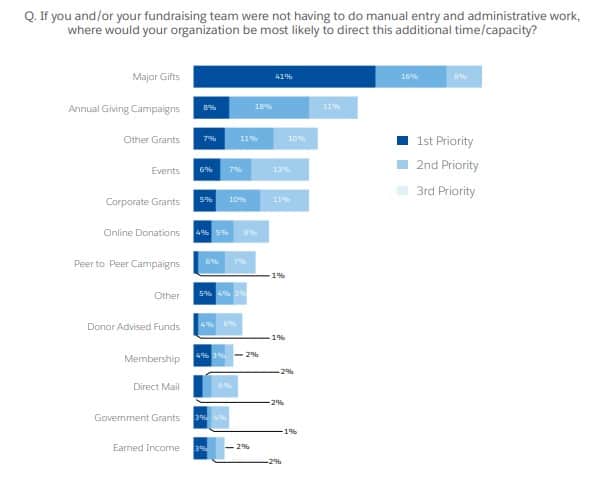
Image Source: Salesforce
With the right integrations, you improve communication with your staff too. Your teams can collaborate more and are empowered to give their best.
Fundraising tools for non-profits provide you with information on donors. You can easily access information on what employee talked to what donor, what they discussed, and how they solved the issue.
If the same donor calls a different staff member, they can easily continue the conversation from where they left off without annoying the donor.
Seventy-two percent of audiences consider having to explain their issue to multiple agents poor customer service. Forty-six percent of audiences will also abandon a brand if the employee is not knowledgeable.
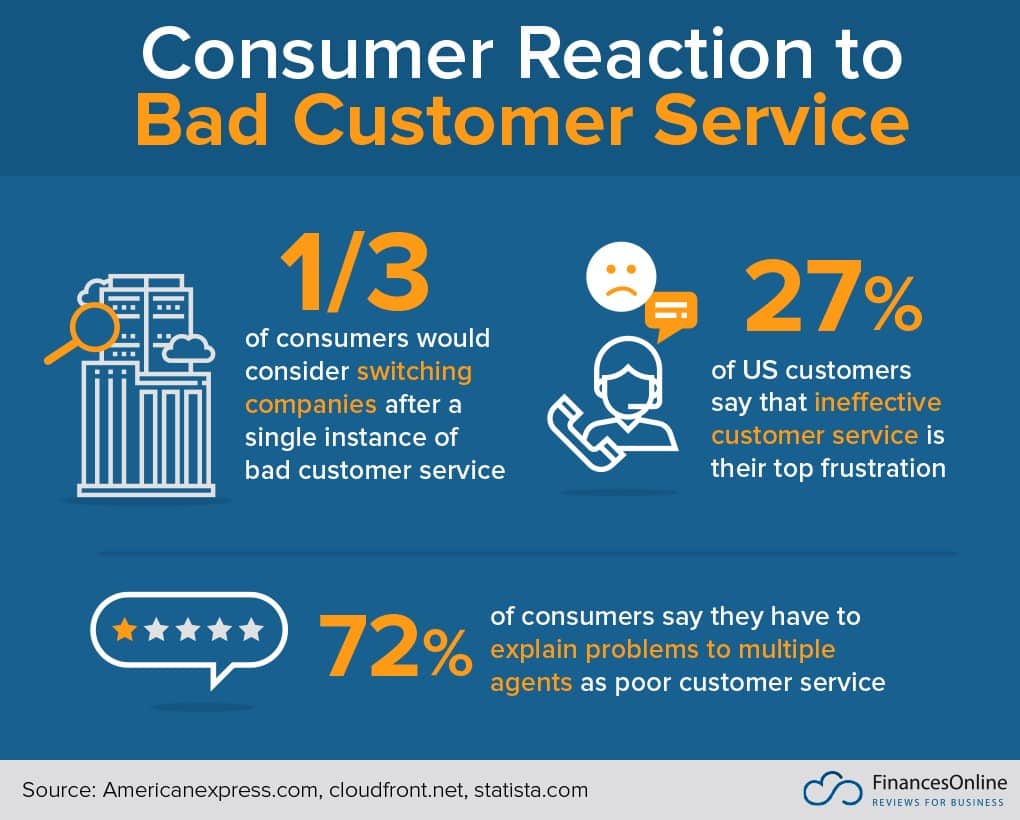
Image Source: Verified tasks
Integration solutions for non-profit organizations allow the employees to access the information quickly from any location and device.
This transparency coordinates efforts leading to better collaboration. Your employees can access information on which of the donors has received what campaign message to avoid flooding a donor with campaign messages.
They send the right messages at the right time, and your organization does not turn off donors due to a disorganized team.
Unified data makes it easy for every employee to access communication flows with individual donors, even those working remotely.
Different departments work together and reduce time wasted counter checking manually if a donor has been sent a campaign message each time you have a new campaign.
Conclusion: Integration for Non-Profit Growth

Integration solutions for non-profit organizations allow you to offer your donors great customer experiences. Your team has access to customer data so that conversations with them are always seamless.
You fully understand your supporter’s history, behavior, actions, and can build deeper relationships. If a donor calls about an event, the employee answering the call has access to donor information and is knowledgeable enough to provide adequate information.
It prevents you from losing donors and gain donors who encourage their friends and family to donate too. You build relationships with every donor and provide customized and personalized experiences that show you care and value their donations.
Your team also collaborates efficiently and has more time to grow your organization, advance your mission, and nurture donors.
With integration solutions for non-profit organizations, you can transform your non-profit organization in terms of operations, facilities, staffing, and leadership. You can address any weaknesses on time and implement growth strategies that give your organization a competitive advantage.
You are also in a better position to streamline operations by unifying data in a central location and find greater success in your fundraising campaigns.
Such integration solutions can also help you improve operational efficiencies and get reliable data. It also gets you up to date and ready information on the donors and supporters, information on your organization and outcomes.
It may sound daunting at first, but the results speak of success when implemented right. Integrating your systems becomes an essential link between information and insight.